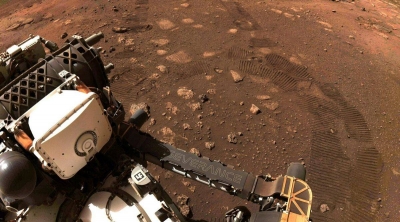
The sky and the flock of stars that flicker endlessly have always been an inspiration for mankind. Some 400 years ago, on a starry night, Italian astronomer Galileo Galilei aimed his telescope towards the sky. That was just the beginning of modern astronomy. Stargazing is the start of an incredible journey towards exploring the cosmos, which will help you learn more about the universe we are living in.
Look at the stars. Look how they shine for you…" sang Coldplay's lead singer Chris Martin in the song "Yellow" which was part of their debut album "Parachutes". Legend has it that the inspiration for the song came when Martin and his bandmates were asked to look at the stars. The band had just finished recording the song "Shiver" and was taking a break when the song's co-producer Ken Nelson asked them to look at the stars. A melody popped into Martin's head. And "Yellow" was born.
The sky and the gaggle of stars that flicker endlessly have always been an inspiration for mankind. It is our window to space and every cosmic body out there. The quest to explore the stellar world dates back centuries.
The start of modern astronomy
Some 400 years ago, on a starry, starry night, Italian astronomer Galileo Galilei aimed his telescope towards the sky. He was the first to use the earliest version of the telescope, his own version of the "spyglass" (a device used to see far away objects) to observe celestial bodies.
He documented what he saw and made discoveries that changed how we perceived the Cosmos. Observing the night sky, he found out that the Moon had mountains and pits, and that Jupiter had moons. That was just the start of modern astronomy.
The compelling need to watch the Moon or the many astral bodies in a star-spangled sky has no rhyme or reason. So if you like the sky and stars, read on.
The art of stargazing
Stargazing is just the start of an incredible journey towards exploring the cosmos, which will help you learn more about the universe we are living in. Every astronomer started off as an enthusiastic stargazer.
Stargazing or amateur astronomy is the practice of watching the stars and other celestial bodies. It can be a rewarding hobby that lets you disconnect from the chores of your routine life and connect with the vast universe.
The first thing to ensure is that you have a clear, dark sky. without light pollution. It is difficult to enjoy the sky and stars if you live in a well-lit area, where light is directed towards the sky. Once you get a clear, dark sky, just look up and befriend the sky.
Observing the sky
You do not need expensive telescopes to see the celestial bodies. All you need to do is look up. The naked eye can guide you well enough. What you might need though is a sky map that can help you identify the many stars and constellations (groups of stars that look like patterns).
Once you correctly identify a star or a constellation, your journey gets more exciting. As many as 88 constellations cover the sky. Try to make out easily recognisable star patterns or constellations such as the Orion, Cassiopeia, Big Dipper/Ursa Major, Ursa Minor, Pegasus and Taunus.
Did you know that some planets are visible to the naked eye? Planets thus visible are Venus, Mercury, Mars, Saturn, and Jupiter.
The brightest star in the night sky is Sirius. But how do you know if you are looking at a planet or a star? Stars have their own light, whilst planets do not. Planets only reflect the light from the Sun and do not twinkle.
Befriend the sky
What you see in the sky, depends on where you are located on Earth. As Earth orbits the Sun, the stars also shift. Once you have understood this, you will know that even as the stars shift as our planet moves, they tend to return to the same spot in the sky every year. Have a journal and make a note of everything you observe in the sky.
One way to get better at spotting the stars and learning about them is to join star parties or go to your nearest observatory. Star parties are events where stargazers join to watch the stars and the sky using telescopes. You can look at the skies using a telescope in observatories as well. You can also join local astronomy clubs. Your school might even have one. If not why don't you take an initiative to start one? Alternatively, you can download mobile applications that help you identify the stars and planets.
As you progress, you can invest in a decent pair of astronomical binoculars that will help you see the celestial bodies up close. For instance, many craters on the moon that you have seen only in pictures become crystal clear as you peer through the binoculars.
Did you know that there is even a global movement to protect the dark sky? So what are you waiting for? The sky is calling. And you must go.
Picture Credit : Google





